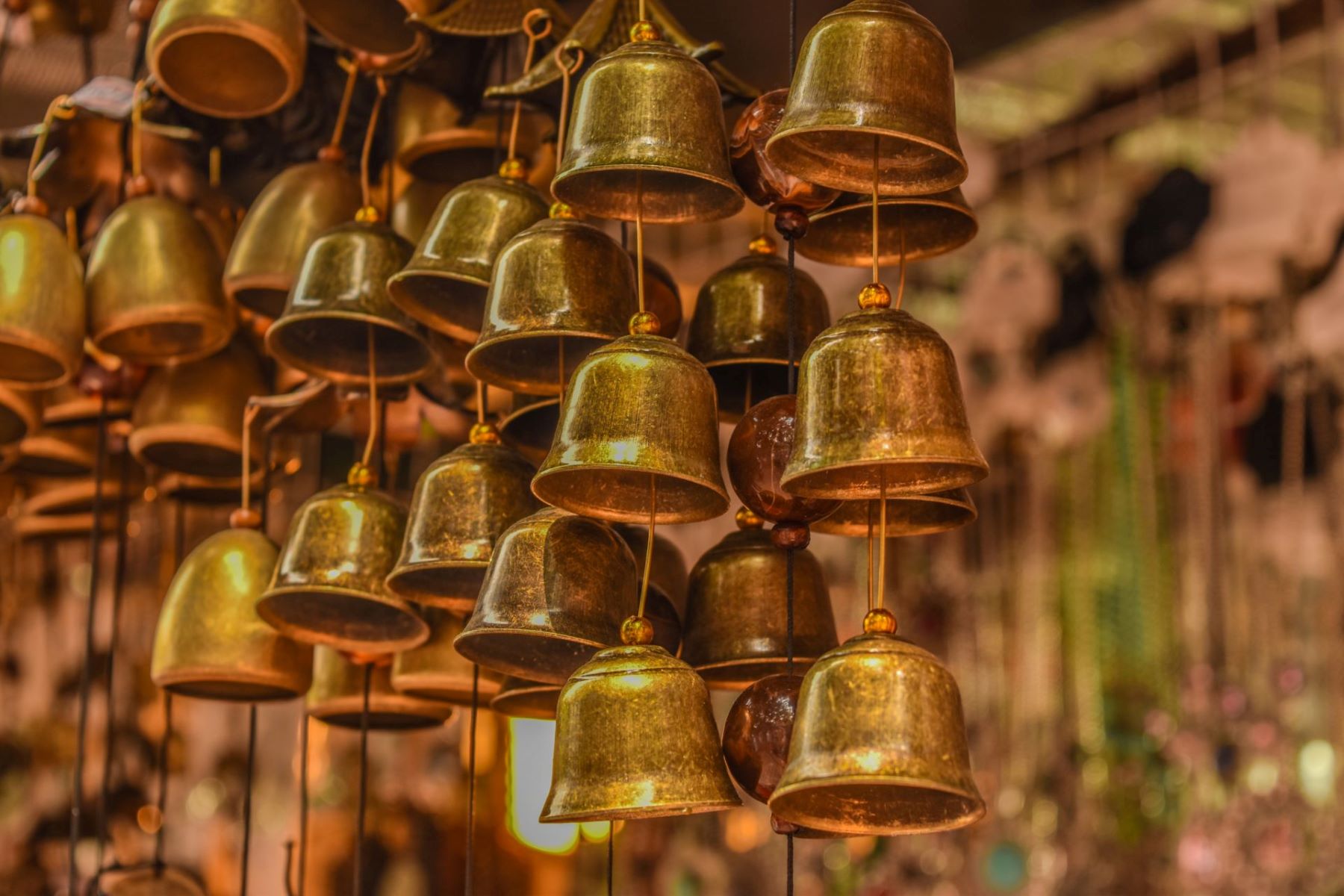
Bell metal is a fascinating alloy with a rich history and unique properties. What exactly is bell metal? Bell metal is a type of bronze, typically composed of about 77% copper and 23% tin. This specific blend gives it a distinct resonance, making it perfect for casting bells. Used for centuries, bell metal has been integral in creating church bells, temple gongs, and even musical instruments. Its durability and sound quality set it apart from other metals. Ever wondered why some bells have that clear, ringing tone? It's all thanks to bell metal. Dive into these 40 facts to uncover more about this remarkable material.
Key Takeaways:
- Bell metal, a special type of bronze, is used for making bells and instruments. It's durable, has a unique sound, and is used in various cultures for religious, ceremonial, and musical purposes.
- Bell metal's unique properties make it ideal for bell-making, cymbals, clocks, sculptures, and more. It has historical significance and is used in different cultures for various musical and ceremonial traditions.
What is Bell Metal?
Bell metal is a type of bronze used primarily for making bells and related instruments. It has a unique composition that gives it distinct properties.
- Bell metal typically consists of 77% copper and 23% tin.
- The high tin content makes bell metal harder and more resonant than other bronzes.
- This alloy has been used for centuries in various cultures to create bells with clear, long-lasting tones.
- Bell metal is also known for its durability, making it ideal for outdoor use.
- The casting process for bell metal requires precise control of temperature and composition to achieve the desired sound quality.
Historical Significance of Bell Metal
Bell metal has played an important role in history, particularly in religious and ceremonial contexts.
- The earliest known bells made from bell metal date back to ancient China around 2000 BCE.
- In medieval Europe, church bells made from bell metal were used to call people to worship and mark the passage of time.
- Bell metal was also used in the creation of cannons during the Renaissance due to its strength and durability.
- In India, bell metal has been used for centuries to make traditional musical instruments like the ghanta and the manjira.
- The Liberty Bell, an iconic symbol of American independence, is made from bell metal.
Unique Properties of Bell Metal
Bell metal's unique properties make it ideal for specific applications beyond just bell-making.
- The alloy's high density allows it to produce a rich, resonant sound.
- Bell metal is highly resistant to corrosion, which is why many ancient bells have survived for centuries.
- The material's hardness makes it less likely to deform under stress, maintaining its shape and sound quality over time.
- Bell metal can be polished to a high shine, making it visually appealing for decorative purposes.
- The alloy's thermal conductivity is relatively low, which helps in maintaining the integrity of the bell's sound.
Modern Uses of Bell Metal
While its primary use remains in bell-making, bell metal has found applications in various modern industries.
- Bell metal is used in the production of high-quality cymbals for drum kits.
- Some high-end mechanical clocks use bell metal for their chimes due to its superior sound quality.
- Bell metal is also used in the creation of certain types of sculptures and art pieces.
- The alloy is sometimes used in the manufacture of specialized industrial components that require high durability and resistance to wear.
- Bell metal is occasionally used in the production of high-end cutlery and tableware.
Bell Metal in Different Cultures
Different cultures have unique traditions and uses for bell metal, reflecting its versatility and importance.
- In Japan, large temple bells made from bell metal are rung to mark the New Year.
- Tibetan singing bowls, often used in meditation and healing practices, are traditionally made from bell metal.
- In Russia, bell metal is used to create the famous church bells that are an integral part of Russian Orthodox worship.
- African cultures use bell metal to make various musical instruments, including the agogo and the balafon.
- In Southeast Asia, bell metal is used to create gongs and other percussion instruments that are central to traditional music.
Challenges in Working with Bell Metal
Despite its many advantages, working with bell metal presents certain challenges that require specialized skills and knowledge.
- The high melting point of bell metal makes it difficult to cast without advanced equipment.
- Achieving the perfect alloy composition requires precise measurement and control of the metal's ingredients.
- The casting process must be carefully managed to avoid defects that could affect the bell's sound quality.
- Bell metal is relatively brittle, making it prone to cracking if not handled properly during the manufacturing process.
- The finishing process, including polishing and tuning, requires a high level of craftsmanship to achieve the desired results.
Environmental Impact of Bell Metal Production
Like all metal production, the creation of bell metal has environmental implications that need to be considered.
- The mining of copper and tin, the primary components of bell metal, can have significant environmental impacts, including habitat destruction and pollution.
- The smelting process used to create bell metal releases greenhouse gases and other pollutants into the atmosphere.
- Recycling bell metal can help reduce its environmental footprint, as the alloy can be melted down and reused without losing its properties.
- Some modern bell manufacturers are exploring more sustainable production methods, such as using recycled materials and reducing energy consumption.
- The long lifespan of bell metal products means they do not need to be replaced frequently, which can help mitigate their overall environmental impact.
Interesting Facts About Bell Metal
Bell metal has many fascinating aspects that make it a subject of interest for historians, musicians, and metalworkers alike.
- The largest bell ever cast from bell metal is the Tsar Bell in Moscow, which weighs over 200 tons.
- Some bell metal bells are tuned to specific musical notes, allowing them to be used in carillons and other musical arrangements.
- The process of tuning a bell metal bell involves carefully removing small amounts of material from the inside of the bell to achieve the desired pitch.
- Bell metal has a unique crystalline structure that contributes to its distinctive sound properties.
- The tradition of "bell ringing" in England, where teams of ringers perform complex sequences of bell sounds, relies on the unique properties of bell metal bells.
The Final Note on Bell Metal
Bell metal, a fascinating alloy of copper and tin, has played a significant role in history. Its unique properties make it ideal for creating resonant bells, musical instruments, and intricate sculptures. This alloy's durability and distinct sound have made it a staple in various cultures, from ancient civilizations to modern times.
Understanding bell metal's composition and uses helps appreciate its impact on art, music, and daily life. Whether it's the clear chime of a church bell or the intricate design of a bronze statue, bell metal continues to captivate and inspire.
Next time you hear a bell ring or see a bronze artifact, remember the rich history and craftsmanship behind bell metal. This remarkable alloy has stood the test of time, proving its worth in both function and beauty.
Frequently Asked Questions
Was this page helpful?
Our commitment to delivering trustworthy and engaging content is at the heart of what we do. Each fact on our site is contributed by real users like you, bringing a wealth of diverse insights and information. To ensure the highest standards of accuracy and reliability, our dedicated editors meticulously review each submission. This process guarantees that the facts we share are not only fascinating but also credible. Trust in our commitment to quality and authenticity as you explore and learn with us.


